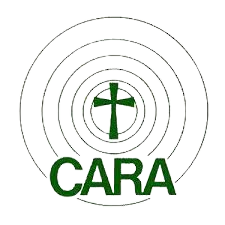Diocesan Services
Contact Dr. Mark Gray, Senior Research Associate, to discuss ways these services can be tailored to assist bishops and other diocesan planners.
Diocese at a Glance:
This report provides insight into the diocesan community as a whole in which the Catholic Church ministers. It is intended for a wide audience and is easily reproduced for distribution to diocesan planners, clergy, and lay Catholics alike. In addition to a printed report, dioceses are provided with an electronic .pdf file that may be uploaded to a website, as well as picture files of all maps.
Demographic summary illustrates:
Socio-economic characteristics
Population
Race
Ethnic composition
Household income
Poverty rates
Age
Catholic population living in diocese
Maps, graphs, and tables clearly illustrate data at the national, provincial, diocesan, and county levels.
Priest Projection:
This program has been used in more than 75 dioceses over the past 20 years. Known for its precise methodology that has proven accuracy over time, these priest projections are an invaluable tool for clergy planning.
Projection based on:
Current age of diocesan priests
Priest retirement age
Recent ordinations
Seminarians currently in formation
Report includes an executive summary, followed by tables and charts with low, medium, and high projections of the number of priests who will be available to serve in a diocese through 2040.
The three factors most likely to affect the number of diocesan priests available for active ministry are:
the number ordained/incardinated each year
the retirement age
whether some priests continue to serve after retirement.
The Priest Projection report presents 18 likely projections created by different combinations of these three factors. This allows the diocese full flexibility in using the projections as these details evolve over time.
Diocesan-Wide Pastoral Planning:
Using CARA’s extensive database of tested questions, surveys can be administered in-pew to some or all of the parishes within the diocesan boundaries. The data collected from these surveys, designed to capture information about parish life, can then be aggregated by deanery, region, or diocesan-wide. These surveys closely follow CARA’s Parish Surveys that CARA has been using nationwide for more than 20 years. Click here for more information on CARA Parish Surveys.
Surveys of Presbyterates:
CARA’s surveys of presbyterates assist dioceses with pastoral planning and understanding the needs of their priests. These surveys are typically conducted with all diocesan priests, including those who are retired, and with religious priests active in parish ministry. CARA adapts the questions to meet the needs of the diocese. Most dioceses that have used this service in the past have been particularly interested in understanding presbyteral attitudes about how to address parish ministry in a time of fewer priests. Many are also interested in priests’ morale, satisfaction with ministry, concerns about retirement issues, and interest in continuing formation. Contact Fr. Thomas Gaunt, SJ about CARA’s presbyteral surveys.
Cultivating Unity:
Dioceses considering a presbyteral survey may also be interested in conducting it through part of a larger program, “Cultivating Unity.” CARA collaborates with the Association for the Ongoing Formation of Priests on this initiative for dioceses and religious institutes of men entitled “Cultivating Unity: The Presbyterate and the Bishop.” The purpose of the program is to strengthen solidarity among priests and between priests and their bishop. The centerpiece of Cultivating Unity is a convocation where presbyteral unity is addressed through presentations, group discussion, prayer, and reflection. CARA is responsible for the research component of Cultivating Unity. Participating dioceses have the option of written questionnaires and listening sessions in advance of the convocation. This provides an initial understanding of priests’ views of unity in their local presbyterate, which serve as the foundation for the convocation. Contact Fr. Thomas Gaunt, SJ about Cultivating Unity.
Commissioned Diocesan Studies:
In 2022, FutureChurch (FC) commissioned CARA to conduct this study to explore parish, ecclesial, and socioeconomic characteristics of the following 11 dioceses between 1970 and 2020. Those dioceses were selected to fit specific needs of FC and they are not meant to constitute a nationally representative sample. More specifically, the purpose of this study was to explore the following research questions: 1) How did the number of parishes change over time in each diocese in the context of changes to other ecclesial statistics?, 2) How many parishes (re)opened/expanded, remained opened, and closed/were absorbed? When did it happen? Where were those parishes located? and, 3) What socioeconomic factors may be related to parish (re)openings/expansions on one side and parish closures/absorptions on the other? The study findings are available in a full report (775 pages) of findings as well as 11 separate diocesan-specific reports:

